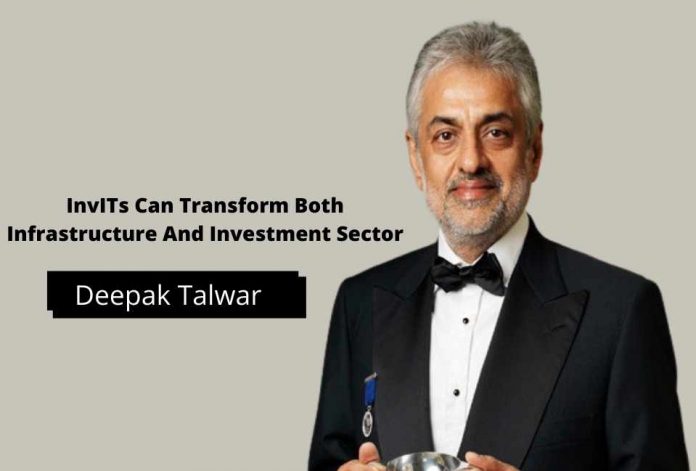Deepak Talwar, a veteran lobbyist in India’s corporate world, sheds light on the growing popularity of InvITs.
As the National Highways Authority of India (NHAI) gears up to commence its Infrastructure Investment Trust (InvIT), it already has made associations with prominent takers from both within and outside the country. It has been reported that well-known Canadian funds as well as Indian insures are finalising their plans to invest in the Rs. 5000 crore InvIT.
The list potential funders include Caisse de dépôt et placement du Québec (CDPQ), Canada, Pension Plan Investment Board (CPPIB), and the Ontario Teachers’ Pension Plan (OTTP). In addition to this, Indian investors such as Life Insurance Corp, HDFC Life and ICICI Prudential Life Insurance, are also looking to invest.
This development has intrigued many,but the concept of InvIT still remains incomprehensible for a lot of investors. So, Deepak Talwar simplifies and explains, “InvIT is to infrastructure, what mutual funds is to investment. It is a trust instrument which pools money from individuals and institutional actors, soit can be vested into different undertakings.”
InvIT operates under two classifications in which individuals can either invest directly or through special purpose vehicles (SPVs). The funds can be put into projects already completed or which are under construction.
Deepak Talwar stresses on the central principle of empowering the infrastructure sector. He underlines, “InvITs enable companies to recycle their capital locked in debt and payment obligations. Since infrastructure projects tend to be long-term investments, companies can raise additional debt through refinancing, and also expand their operational capabilities.”
From the perspective of investors, these funds offer an array of benefits. Through the diversification of portfolio, InvITs assure a steady income and decrease risks for a capitalist. This feature is a lucrative attribute for people who have retired and are looking for a regular source of income.
Since they operate under SEBI Regulations 2016, the assets are managed by field experts and professionals. Such a structure facilitates efficient allocation and management of resources without the possibility of the holdings getting fragmented.
Deepak Talwar says, “ InvITs are mandated to disperse 90% of their net distributable cash flows to the unit investors. The average tenure of infrastructure projects also spans over a decade, which ensures a steady return for a longer period of time.”
However, like any financial instrument, InvITs come with their share of demerits. Even though they offer easy entry and exit options, it can be quite challenging for small investors to benefit from the liquidity of these funds. Besides, infrastructure projects usually turn profitable only after a long duration.
They are also prone to be greatly affected by any shift in regulatory policies surrounding taxation or sectors related to the project. Significant inflation rate is also bound to increase the project’s operating cost, which might lead to decrease in returns for the investors.
Because of similar features, InvITs frequently get compared with Real Estate Investment Trust (REITs). Structurally, both trusts accumulate capital from various investors which is then administered by a team of trustees, sponsors and investment managers. But InvITs operate with considerably bigger trading size, making them less feasible an option for small investors.
InvITs have a huge potential because of the market size they have tapped. However,all investors must compare wisely the value on their return in the long run versus a stable income generated via REITs in the shorter duration.
🔥379










